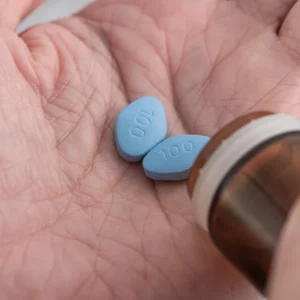For decades, the management of type 1 diabetes was a tethered existence. Even with the advent of insulin pumps—a revolutionary step up from multiple daily injections—users were physically connected to their life-sustaining device by a thin plastic tube. This tube, while functional, was a constant reminder of their condition, a source of potential snagging, kinking, and inconvenience. It dictated clothing choices, complicated participation in sports, and made something as simple as sleeping a logistical challenge. But a new era in diabetes technology has arrived, and it is decisively untethered. The pump patch has emerged as a transformative force, severing the final physical tie to the traditional insulin pump and offering an unparalleled level of freedom and discretion in diabetes care.
A pump patch is a small, lightweight, and tubeless insulin delivery device that adheres directly to the body. It combines the insulin reservoir, pumping mechanism, and cannula insertion system into a single, compact pod. This pod is controlled wirelessly by a separate handheld device or a compatible smartphone app, eliminating the need for any physical tubing between the pump and the infusion site. This simple yet profound design innovation addresses the primary drawbacks of traditional pumps, paving the way for a more seamless and integrated approach to automated insulin delivery. It represents not just an evolution in form but a revolution in the user experience, allowing individuals to manage their diabetes with greater ease, confidence, and normalcy than ever before.
Breaking Free: The Evolution to a Tubeless Design
The journey of the insulin pump has been one of progressive miniaturization and intelligence. The first pumps, while groundbreaking, were bulky and conspicuous. Over time, they became smaller and smarter, but the fundamental architecture of a pager-sized device connected by a tube remained the standard. This “tethered” design, while effective, came with a host of practical challenges. The tubing could easily get caught on doorknobs or furniture, leading to painful site removals. It created a potential point of failure if the tube became kinked or occluded, blocking insulin delivery. Users had to find ways to secure the pump during physical activity and disconnect it for activities like swimming or showering.
The pump patch was conceived to solve these exact problems. By integrating all the necessary components into a single, on-body pod, it eliminates the tube entirely. The device consists of two main parts: a disposable pod that contains the insulin and the soft cannula, and a reusable, wireless controller (often called a Personal Diabetes Manager or PDM) or a smartphone app.
The process is remarkably simple. The user fills the pod with rapid-acting insulin, prepares the skin site (commonly on the abdomen, back of the upper arm, or thigh), and attaches the pod with its built-in adhesive. With the press of a button on the controller, the device automatically inserts a tiny, flexible cannula just under the skin, a process that is virtually painless and takes a fraction of a second. From that point on, for the next several days, all insulin delivery—both the continuous background (basal) insulin and the mealtime (bolus) doses—is managed wirelessly from the controller. This tubeless freedom is a game-changer, especially for children, athletes, and anyone leading an active lifestyle.
A Spectrum of Simplicity and Sophistication
The world of the pump patch is not one-size-fits-all. Different devices have been designed to meet the diverse needs of the diabetes community, ranging from simple bolus-only patches to highly advanced, fully integrated automated systems.
On one end of the spectrum are devices like the CeQur Simplicity patch. This is a “bolus-only” pump patch designed primarily for individuals with type 2 diabetes who take a daily long-acting insulin injection for their basal needs but require multiple mealtime injections. Instead of carrying pens or syringes, the user wears a discreet patch for up to four days. By simply pinching buttons on the side of the device, they can deliver a bolus of two units of insulin at a time to cover their meals. It’s a simple, mechanical solution that replaces up to nine mealtime injections with one device, offering convenience and discretion.
On the other end is the full-featured pump patch that functions as part of a sophisticated Automated Insulin Delivery (AID) system. A prime example is the Omnipod 5, the first tubeless AID system integrated with a CGM. These systems represent the pinnacle of current diabetes technology. The pump patch not only delivers both basal and bolus insulin but is also in constant communication with a Continuous Glucose Monitor (CGM) and a control algorithm. This “hybrid closed-loop” system automates a significant portion of diabetes management. The algorithm analyzes the CGM data, predicts where glucose levels are headed, and automatically adjusts the basal insulin delivery from the pump patch to prevent highs and lows.
The Intelligent Ecosystem: Pump Patch, CGM, and Algorithm
The true power of the modern pump patch is realized when it functions as the delivery arm of an integrated AID system. This intelligent ecosystem works to mimic a healthy pancreas by creating a continuous feedback loop.
The CGM, such as the highly accurate Aidex CGM, acts as the system’s sensor. It provides a constant stream of glucose data, including the current value and the direction and speed of the trend. This rich data is fed to the control algorithm, the system’s “brain.” The algorithm’s job is to analyze this information and make predictive decisions. If it sees that glucose is rising, it can command the pump patch to increase the basal rate or deliver a small, automated correction bolus. If it predicts a drop, it can reduce or suspend insulin delivery from the patch to prevent hypoglycemia.
The pump patch is the crucial action component of this system. Its ability to receive and execute wireless commands from the algorithm is what makes automation possible. The Equil patch pump, for example, is designed for this kind of precise, wireless control, featuring the ability to fine-tune insulin delivery in steps as small as 0.025 units. Because it is waterproof and securely attached to the body, it ensures that this automated control remains uninterrupted, whether the user is sleeping, showering, or exercising. This synergy between a reliable CGM, a smart algorithm, and a responsive pump patch leads to significant improvements in clinical outcomes, most notably an increase in Time in Range (TIR), which is strongly linked to a lower risk of long-term complications.
Living Untethered: The Impact on Daily Life
The clinical data is compelling, but the true story of the pump patch is told in the lives it changes. By removing the physical and logistical burdens of tubing, it allows people with diabetes to engage more fully and freely with the world. Athletes can compete without worrying about their pump being disconnected. Children can play without their parents fearing a snagged infusion set. The waterproof nature of the pods means swimming and beach days are no longer complicated by diabetes hardware.
This freedom extends beyond just the physical. The discreet nature of the pump patch reduces the social visibility of the condition. There’s no device on a belt or in a pocket, no tubing to hide under clothing. The lightweight design of pumps like the 23-gram Equil pump makes them easy to forget they are even there. This reduction in the constant visual and physical reminders of diabetes can have a profound positive impact on mental well-being, reducing the feeling of being “different” and fostering a greater sense of normalcy. When combined with the automation of an AID system, the cognitive load is also dramatically lightened. The system handles the background adjustments, reducing the constant stream of calculations and decisions, which helps to combat diabetes burnout and allows for a more spontaneous life.
Frequently Asked Questions
-
What is the main advantage of a pump patch over a traditional tubed pump?
The primary advantage is the complete absence of tubing. This provides greater freedom of movement, removes the risk of the tube snagging or kinking, and allows for more discreet placement under clothing. Being waterproof, a pump patch can be worn continuously during activities like swimming and showering without needing to be disconnected. -
How often do you have to change a pump patch?
This depends on the specific model. Full-featured AID patches like the Omnipod 5 are typically worn for up to three days before the entire pod is discarded and replaced. Simpler, disposable patches like the V-Go are designed for 24-hour wear. Bolus-only patches like CeQur Simplicity can be worn for up to four days. -
Does a pump patch system completely automate diabetes care?
No, not yet. Current systems are “hybrid closed-loop.” While the pump patch and algorithm automate basal insulin delivery, the user must still manually announce meals by counting carbohydrates and commanding the pump to deliver a bolus dose via the wireless controller or smartphone app. -
How does the Aidex CGM work with a pump patch system?
In an integrated system, the Aidex CGM would continuously measure glucose levels and wirelessly transmit this data to the control algorithm. The algorithm then uses this highly accurate information to make predictive decisions and sends commands to the pump patch (like the Equil pump) to automatically adjust insulin delivery, helping to keep glucose levels stable and in range. -
Is a pump patch a good option for children?
Yes, a pump patch is often considered an excellent option for children and teenagers. The tubeless design is ideal for their active lifestyles, reducing the risk of the device being accidentally pulled off during play or sports. The wireless control also allows parents or caregivers to discreetly manage the child’s insulin delivery from a separate device.






